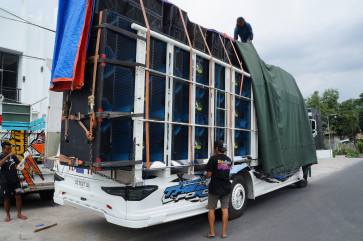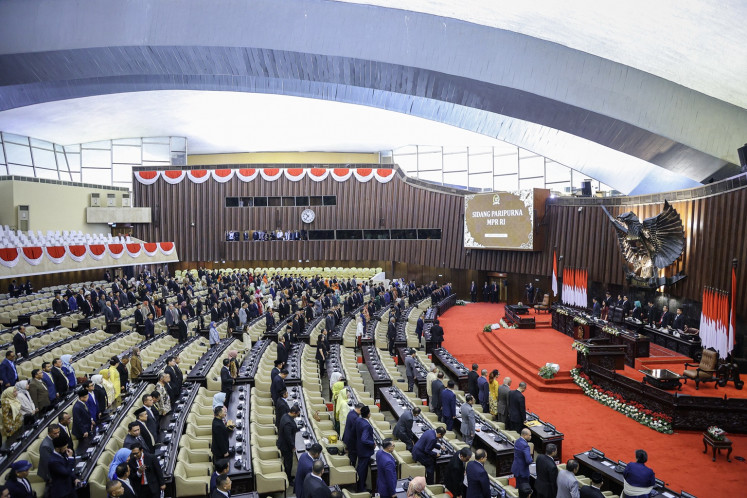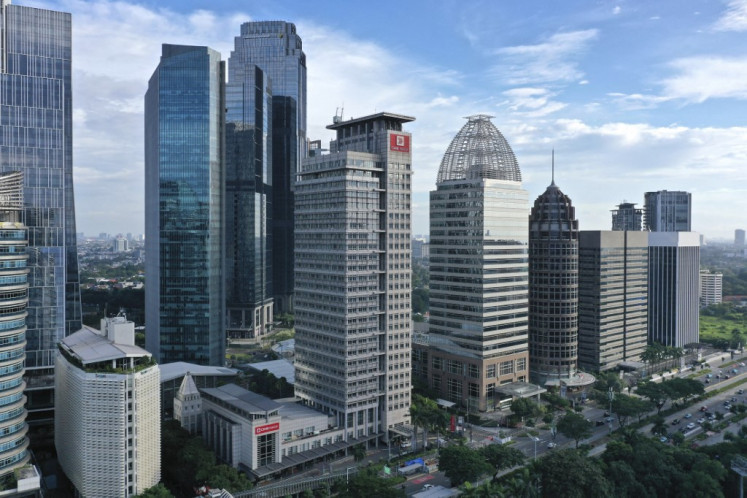Popular Reads
Top Results
Can't find what you're looking for?
View all search resultsPopular Reads
Top Results
Can't find what you're looking for?
View all search resultsChiang Mai fund doubled to $240 billion
ASEAN+3 countries have agreed to double the Chiang Mai initiative multilateral fund to US$240 billion from $120 billion during the Asian Development Bank (ADB) meeting in Manila recently, giving member countries more financial sources to tap into especially during a difficult time
Change text size
Gift Premium Articles
to Anyone
A
SEAN+3 countries have agreed to double the Chiang Mai initiative multilateral fund to US$240 billion from $120 billion during the Asian Development Bank (ADB) meeting in Manila recently, giving member countries more financial sources to tap into especially during a difficult time.
“During the ASEAN+3 ministerial meeting, we decided to add the Chiang Mai initiative fund to $240 billion from $120 billion,” Finance Minister Agus Martowardojo told reporters here Tuesday.
ASEAN+3 consists of 10 Association of South East Asian Nation (ASEAN) members and three developed Asian countries – Japan, China and South Korea.
Officials of the ASEAN+3, during their 15th meeting in Manila on the sidelines of ADB’s 45th Governors Meeting, also increased from 20 percent the availability of funds for the de-linked IMF portion “with a view to increasing it to 40 percent in 2014 subject to review should conditions warrant.”
Also approved during the meeting is the lengthening of the maturity for the IMF linked portion from 90 days to one year and the support period from two years to three years.
For the de-linked portion, maturity of the fund was increased to six months from 90 days and the support period from one year to two years.
ASEAN+3 Finance Ministers and Central Bank Governors also introduced a crisis prevention facility dubbed “CMIM Precautionary Line (CMIM-PL).”
In a statement, the finance and monetary officials said the decisions made in their meeting “will serve as another important step forward to strengthen the regional financial safety net and to pursue sustainable growth in the region.”
Agus said that during the meeting, all representatives also managed to establish the first ASEAN Infrastructure Fund (AIF) board of directors.
“Indonesia has been appointed to become a joint chairman [with Malaysia] for the first year. Then, Indonesia will become the chairman for the following two years and Malaysia will get its turn to chair in the next two years,” Agus said.
Agus said that he expected Indonesia would be able to receive a significant portion of the AIF to fund for its infrastructure development. “We have proposed a lot of projects to the AIF,” he said.
Agus said that the institution that would be in charge in disbursing the AIF fund would be the ADB.
“AIF board of directors will act like commissioners while the implementation of fund disbursement will be in the hands of the ADB to maintain neutrality,” he said.
ADB, during the meeting, also announced that it secured $12.4 billion for its confessional Asian Development Fund, a 9.5-percent increase over the previous four-year period. The funds will be used to promote gender mainstreaming, good governance, food security, private sector development and the formation of a Disaster Response Facility.
Previously, the AIF, which pools funds from ASEAN’s member nations with the ADB, has also planned to aid member nations with their infrastructure needs with an individual project lending cap of $75 million.
The money committed to the AIF will allow funding for six or so projects a year to cut poverty, increase trade or boost investment.
Critical infrastructure needs in the Southeast Asia region require $60 billion in investment a year, according to estimates.
In Indonesia, the government is pushing to realize an ambitious plan to propel the nation into the ranks of the world’s top-ten largest economies by 2025, with thousands of trillions of rupiah
Poor roads, overcrowded sea- ports and airports, and an inadequate railroad system, among other infrastructure concerns, have hindered Indonesia from reaching a potential annual economic growth rate of 7 percent, economists have said.
The AIF has total lending commitments of about $4 billion through 2020, which might be leveraged to more than $13 billion.










